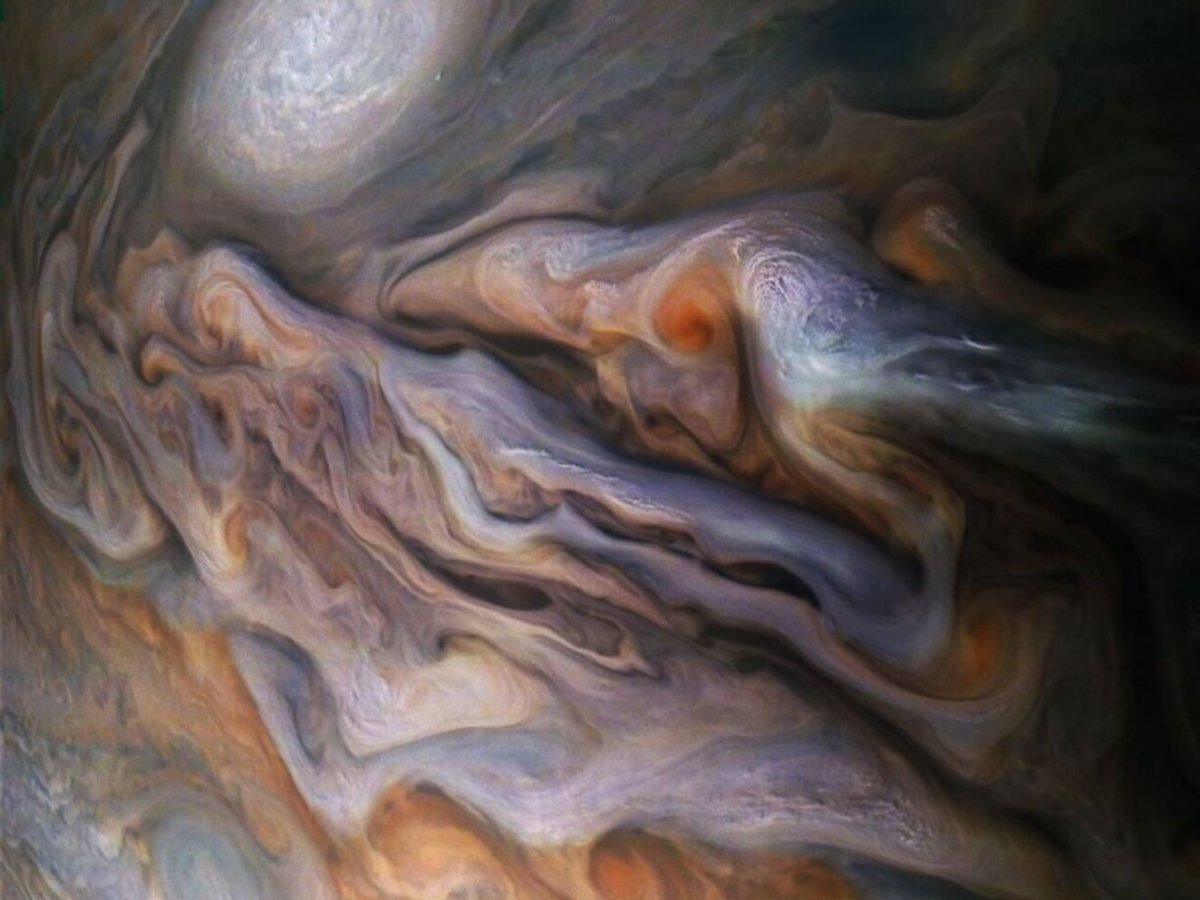A spacecraft orbiting Jupiter has revealed "frosted cupcake" clouds covering the planet.
Incredible 3D renders, derived from data captured by JunoCam, the visible-light camera onboard NASA's Juno spacecraft, have allowed animations of the relative heights of the cloud tops of our solar system's largest planet.
They reveal delicately textured swirls and peaks that researchers say resemble the frosting on top of a cupcake.

The results were presented by citizen scientist and professional mathematician and software developer, Gerald Eichstädt, at the Europlanet Science Congress (EPSC) 2022 in Granada.
Understanding the relative heights of the spiky pillars within the swirls will help scientists unveil in more detail the elements that compose them.
Put on board initially to increase public engagement around the exploration of Jupiter and its moons, a worldwide team of citizen scientists, working in collaboration with professional astronomers and the Juno team, have demonstrated that JunoCam can also provide valuable science.

"The Juno mission provides us with an opportunity to observe Jupiter in a way which is essentially inaccessible by Earth-based telescopic observations," Eichstätd explained.
"We can look at the same cloud features from very different angles within only a few minutes. This has opened up a new opportunity to derive 3D elevation models of Jupiter's cloud tops. The images of the wonderful chaotic storms on Jupiter seem to come to life, showing clouds rising at different altitudes."
Using the different ways in which sunlight is reflected and scattered by clouds, the team has succeeded in pinpointing the elevation of the cloud tops observed. The solar illumination is most intense for clouds in the upper atmosphere. Deeper in the atmosphere, more light is absorbed–particularly by methane–before being scattered back up to the camera by the cloud tops.

"From theoretical models, the clouds are expected to be composed of different chemical species, ammonia, ammonium hydrosulphide, and water ice from top to bottom," Eichstädt said. "Once we calibrate our data, thanks to other measurements of the same cloud tops, we will test and refine the theoretical predictions and have a better 3D picture of the chemical composition."
On August 5, 2011, NASA's Juno spacecraft embarked on a 5-year journey to our solar system's largest planet–the gas giant Jupiter. Its mission is to probe beneath the planet's dense clouds and answer questions about the origin and evolution of Jupiter, our solar system, and giant planets in general across the cosmos.
Juno arrived at Jupiter on July 4, 2016, after a 5-year, 1.7-billion-mile journey, and settled into a 53-day polar orbit stretching from just above Jupiter's cloud tops to the outer reaches of the Jovian magnetosphere.
Produced in association with SWNS.
This story was provided to Newsweek by Zenger News.
Uncommon Knowledge
Newsweek is committed to challenging conventional wisdom and finding connections in the search for common ground.
Newsweek is committed to challenging conventional wisdom and finding connections in the search for common ground.





